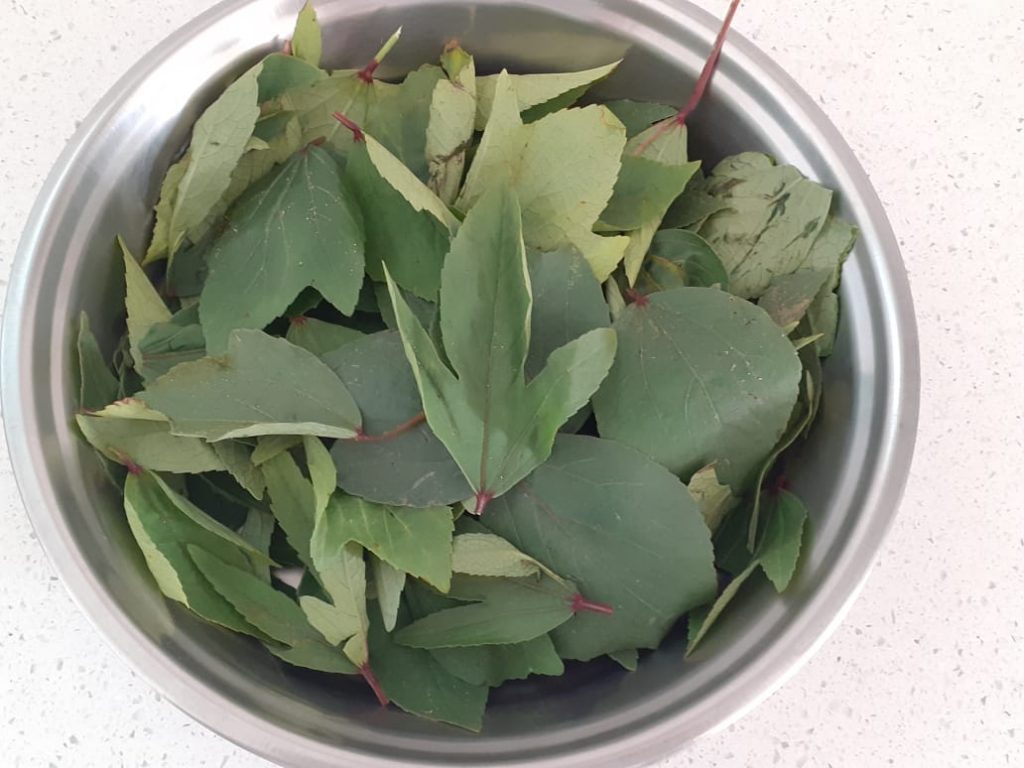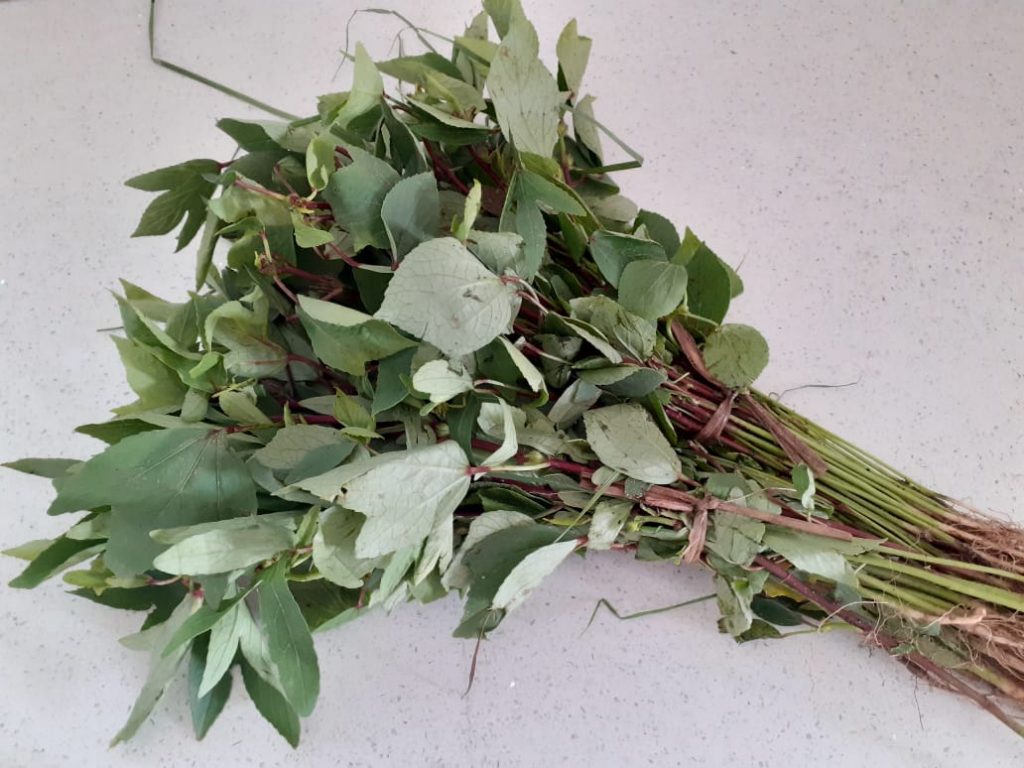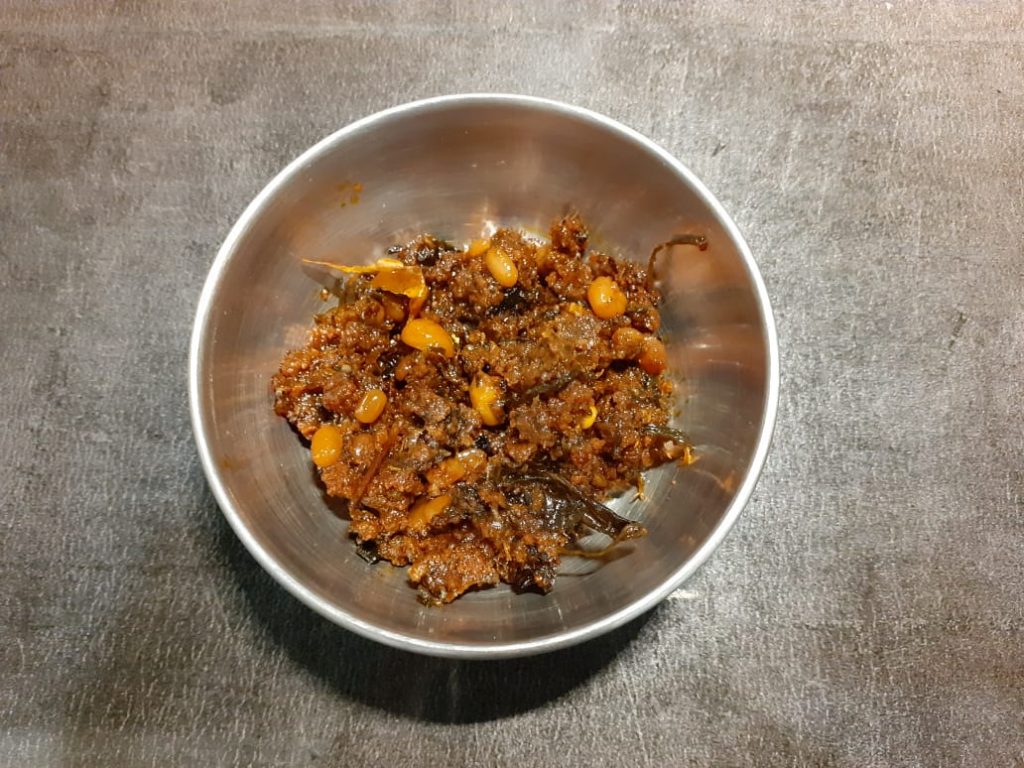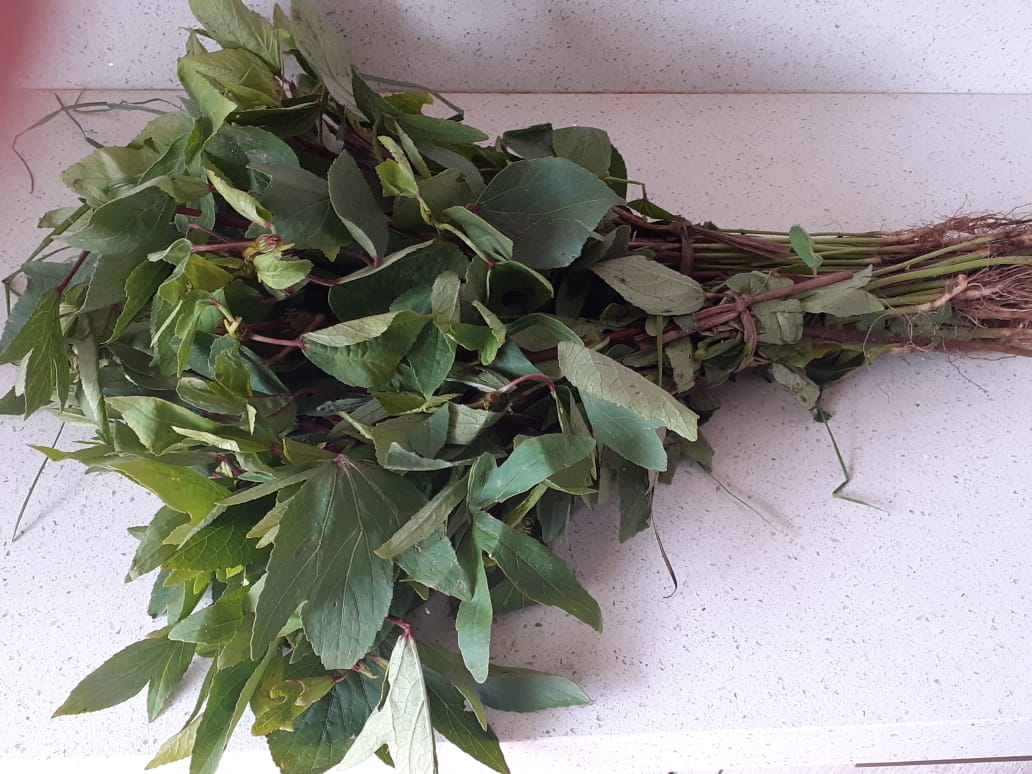Ambadi commonly known as Gongura in Telugu is one of the popular green leafy vegetables among Telugu people. Be it marriage or house warming ceremony, no function is complete without Gongura cuisine in the meal of Telugu families. Gongura or Ambadi is popular for its tangy taste which can give any cuisine a twist in which it is added. The Health Benefits of Ambadi are very less known in modern days.
Indian agricultural scientist has recorded 1532 edible plants. Tribal and rural people use these plants as food, medicine, and sources of income.
My question to you is how many native plants do you eat? Our apathy towards our local greens has earned them the tag of Orphan Crops: the ones that no one wants to eat and therefore no one wants to grow. It’s high time we include our local greens in our diet to get its health benefits and improve the agro-economy of our country.

Ambadi – Queen of green vegetables
Local Greens, like Ambadi, are Climate-resilient, grow in every condition, need no labor and can bring relatively easy income for our farmers.
The green-leaved, red-stemmed ambadi belongs to the hibiscus family. Ambadi is taller than the other greens and more acidic, which is why it is not affected by the microorganisms during monsoons. It can be safely consumed during monsoons.That’s why it considered the queen of green vegetables.
It is available all over the country and known by different names. Ambadi is its Marathi name, Gongura in Telugu, Sorrel leaves or Roselle in English, Pitwaa in Hindi, khata Palanga in Oriya, and mestapat in Bengali.
It comes in two varieties, green stemmed leaf and red-stemmed leaf. The red-stemmed variety is sourer than the green stemmed variety. Maharashtra and Andhra Pradesh are the best producers of Gongura. (1)
Ambadi Health Benefits
1.Nutritional Powerhouse
100 grams of Edible Portion Of Ambadi (Nutritive Value Of Indian Foods, NIN)
| Calories | 25 KCal |
| Protein | 0.6g |
| Fat | 0.2 g |
| Crude Fiber | 1.3g |
| Carbohydrates | 5.1 g |
| Calcium | 130 mg |
| Phosphorus | 20 mg |
| Iron | 1.7mg |
| Magnesium | 123 mg |
| Other minerals like Potassium, Manganese, Zinc, Sodium, Copper | In Traces |
According to USDA data Vitamins in Ambadi/ sorrel include vitamin A (5320 IU or 106 percent of your daily recommended intake), vitamin C (64 mg or 106 percent of your daily recommended intake), and folate (about 4 percent of your recommended daily intake). You’ll also get small amounts of thiamin, riboflavin, niacin, vitamin B6, and pantothenic acid.
2. Good for Women Health
Ambadi is a good source of folic acid and iron. It is without the side effects of constipation that come with an iron pill. As it is a good source of Vitamin C it eases the pain during menstruation and also prevents heavy bleeding. Consume it in the form of tea during regular periods. (2)
3.Good for bone health
According to studies, the Ambadi leaves are also a great way to keep your bones strong. This mineral-rich plant has calcium, magnesium, and phosphorus in abundance, all of which are important for maintaining strong and healthy bones. A diet rich in these minerals can help in preventing bone loss and conditions such as osteoporosis.

4. Boosts immune health
The high content of vitamin C, popularly known as ascorbic acid, plays a major role in boosting the immune system and in increasing the number of white blood cells in the body. This is also one of the reasons Ambadi/ gongura is widely consumed even during the monsoons.
5. Controls Homocysteine Levels
Homocysteine is a common amino acid in the blood. High levels of Homocysteine is linked to early heart diseases and Renal diseases. Ambadi is an excellent source of folate and Vitamin B6 which are needed to keep the homocysteine levels low. (3)
6. Good for Diabetics
Ambadi is a good source of fiber which is very good to control blood sugar levels. Traditionally it is eaten with bhakri made of makai, jowl, bajra, and ragi which are low glycemic index combo meals. (4)
7. Prevents constipation
Magnesium and Fibre present in Ambadi provide quick relief from constipation. The laxative property of this vitamin helps to relax the intestinal muscles, thus helping to establish a smoother rhythm while passing bowels. It also has another property of attracting water, which in turn softens the stool and helps it to pass easily. (5)
8. Stomach Soother
Ambadi is very easy to digest and cook. It is high in slowly digestible starch, making it an excellent vegetable to Sustain and nurture the gut ecosystem. Low diversity in vegetarian sources leads to poor diversity in the microbiome ecosystem in the gut. This can accelerate aging, lead to depression, and has pro-inflammatory potential. Include this indigenous Ambadi in your diet to bring little diversity to your diet. Tribals use ambadi to improve immunity, strengthen gut health, and prevent diarrhea. Its sour taste zings up the taste buds and increases appetite. (6) (7)

Uses of Ambadi
1. Flowers –
Ambadi has beautiful red flowers that can be boiled in water and consumed for fighting stomach ailments. This herbal tea can be a perfect detox drink.
2. Leaves –
Leaves are eaten as a delicacy from Meghalaya to Tamil Nadu all over the year. It is the only green leafy vegetable eaten in the monsoon. It can be easily included in your daily curries, dals, and pickles. It has a distinctive sour taste. A good source of minerals and Vitamins makes it not only a delicious food option but a healthy one too.
3. Stems –
Stems are eaten and cooked along with the regular curries and dals.
4. Seeds –
Seeds of Ambadi are crushed and turned into oil, extensively used for lighting lamps, and can even be used for cooking.
How to select Ambadi/Gongura?
Look for ambadi that have firm, Unwilted leaves that are deep green with no signs of yellowing or browning. Leaves that are smaller in size are tender with a milder flavor.
How to Store Ambadi?
At home wrap it with a paper towel or place it in a cloth bag and store it in the refrigerator until you are ready to use it. It usually stays fresh for 1-2 weeks.

Are there any side effects of Ambadi?
1. Ambadi contains high amounts of oxalic acid, overconsumption may cause oxalate poisoning which can cause adverse effects by damaging kidneys, liver and gastrointestinal tract.
2. Ambadi may cause acidity in a few individuals. Acidity is generally caused due to excessive usage of pain killers, antibiotics, untimely foods, processed foods, and excessive usage of tamarind and spice in the food.
Boil Ambadi for 10 minutes and discard the water. Use the blanched Ambadi for preparing dals and curries. This will relieve you from acidity related to it.
3. It should not be consumed during breastfeeding.
4. People with skin allergies and Asthma should avoid Ambadi. (8) (9)
Conclusion
Ambadi has everything that makes it a healthy food option. It is a versatile and nutrient-dense green leafy vegetable available all around the year.
Tribals and Rural people are using it for centuries to cure their stomach ailments and as a source of folic acid. Include Ambadi health benefits in your regular diet to bring some diversity in your meal.
Encourage your locally grown greens and avoid food that is grown miles away to keep up your daily nutrient intake.
Kale is nothing but someone else’s ambadi, someone who lives 5000 miles away from you. The more the food travels, the more it loses its nutrients. So enjoy Ambadi in moderation to gain its health benefits.






4 Comments